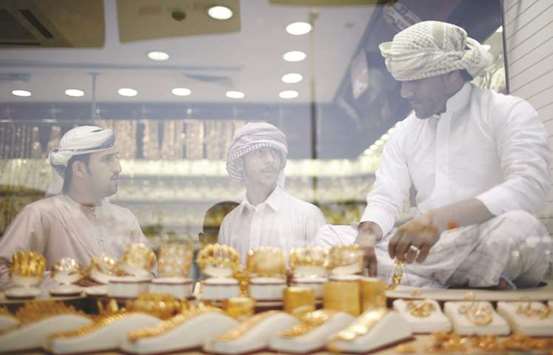Gold jewellery demand in the UAE sank to a 20-year low last year, the fourth consecutive annual decline, the World Gold Council said.
Purchases fell 2% to 42.8 tonnes last year, the producer-funded council said Tuesday in an emailed report. The drop occurred even after fourth-quarter demand gained 16% as consumers rushed to buy to beat a 5% Value Added Tax that was imposed in January, it said.
The UAE and Saudi Arabia, the world’s biggest oil exporter, have been squeezed by a fall in crude prices over the past several years. UAE per capita consumer gold demand dropped from 8.7 grams in 2013 to 4.8 grams in 2017 while Brent crude tumbled over the same period from $108.70 a barrel on average to $54.75, according to data compiled by the council and Bloomberg. Iran and Kuwait were the only Middle Eastern countries that showed higher gold jewellery demand last year. Even after bar and coin demand in the oil-rich region more than doubled, to 40.5 tonnes, last year, the market “remains a shadow of its former self,” with average annual demand of about 70 tons in 2007 to 2016, the council said.
Saudi Arabia, the region’s biggest buyer, bought 45.7 tonnes of gold jewellery last year, down 8%, according to the report. Iran came close to beating Saudi Arabia with jewellery demand of 45.4 tonnes, up 12% for the year and the most since 2013, the council said. Demand slowed in the fourth quarter, with a gain of 2%, as “worsening US-Iranian relations undermined consumer sentiment,” the council said.
Kuwait’s gold jewellery usage climbed 4% to 13 tonnes, while Egypt’s purchases slumped 14% to 22 tonnes, according to the report.

Employees arrange jewellery at a window display in a shop at the Gold Souq in Dubai (file). The UAE and Saudi Arabia, the world’s biggest oil exporter, have been squeezed by a fall in crude prices over the past several years.
